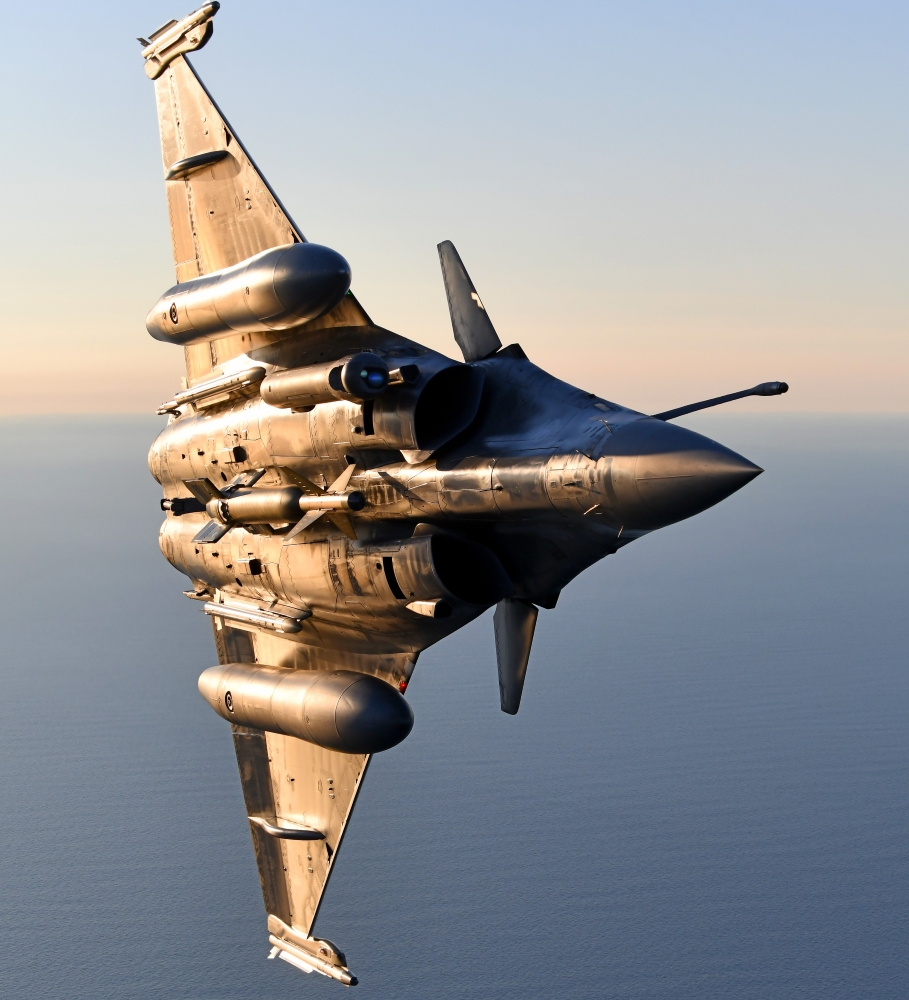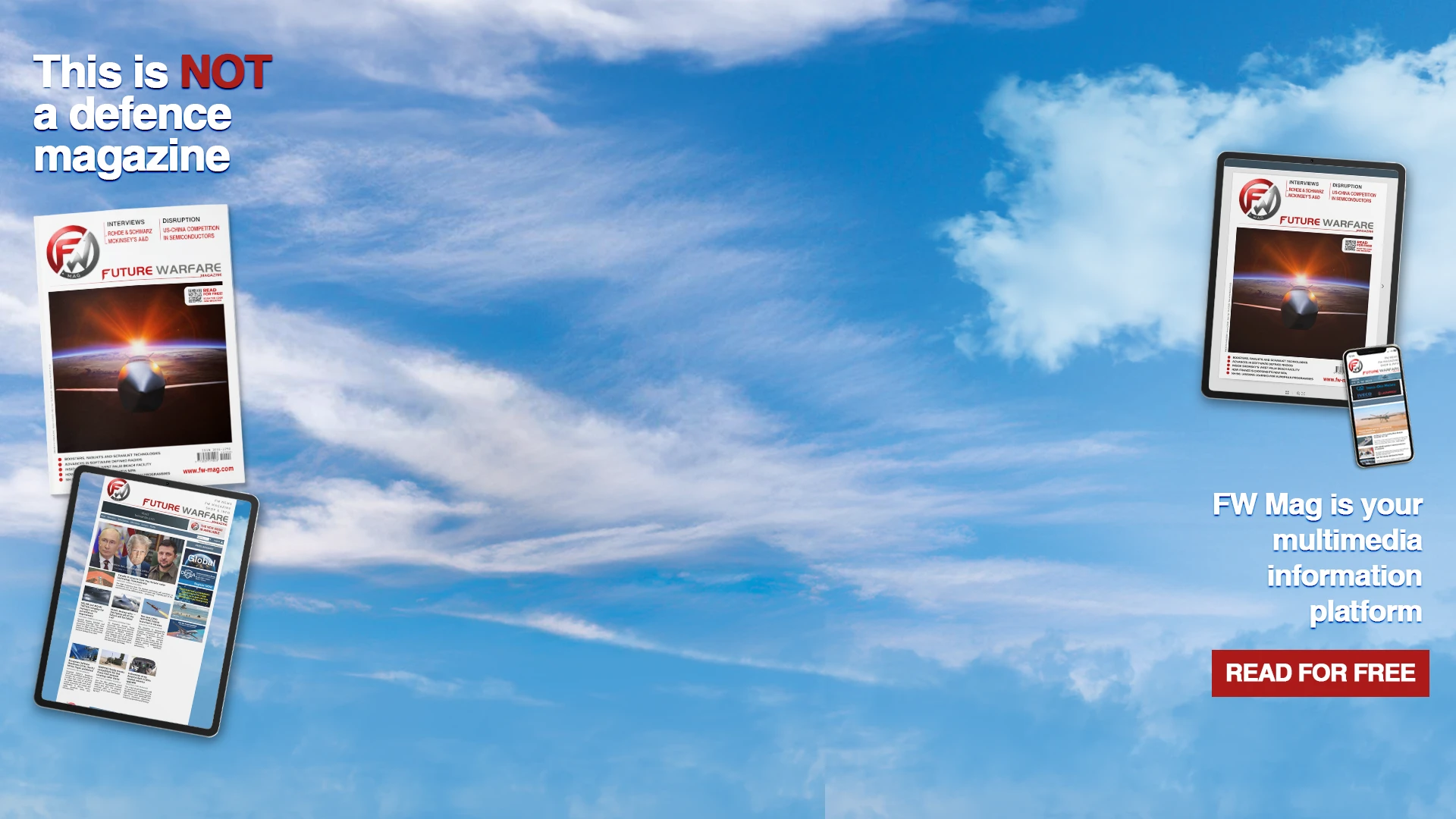
Ukraine and France have just concluded a landmark 10-year defence agreement on Monday, 17 November 2025, with Ukrainian President Volodymyr Zelenskyy and French President Emmanuel Macron signing a letter of intent (LoI) at Villacoublay Air Base for the acquisition of up to 100 Dassault Aviation RAFALE multirole fighters and advanced MBDA SAMP/T NG air defence systems. The deal, which Zelenskyy described as "historic," represents one of the largest fighter procurement programmes in European defence cooperation and signals a strategic pivot towards building Ukraine's post-war military architecture rather than immediate battlefield reinforcement.
What we know
The agreement encompasses a comprehensive package centred on 100 RAFALE fighters alongside associated armaments, next-generation SAMP/T NG air defence batteries, radar systems, and multiple drone platforms. According to the Élysée Palace, the framework extends over approximately ten years and aims to "put French excellence in the arms industry at the service of Ukraine's defence". Before signing, Zelenskyy reviewed the RAFALE jet, its weapons suite, the SAMP/T NG system, and various unmanned platforms during a tarmac demonstration.
The RAFALE, designed by Dassault Aviation and powered by Safran M88 engines with Thales RBE2 AESA radar and SPECTRA electronic warfare systems, represents one of the world's most advanced fourth generation-plus fighters. If completed, the deal would make Ukraine one of the largest foreign operators of the French jet, joining countries including India, Egypt, Greece, Indonesia, and the United Arab Emirates. The SAMP/T NG air defence system, developed by Eurosam - a joint venture between Thales and MBDA's French and Italian branches - is scheduled for delivery to France from 2027 onwards and offers significantly enhanced interception capabilities against ballistic and hypersonic missiles compared to the current SAMP/T variant already deployed in Ukraine.
This agreement forms part of Ukraine's three-platform strategy to field approximately 250 Western combat aircraft, with the RAFALE complementing existing F-16 deliveries and Sweden's GRIPEN E/F fighters under a separate October 2025 letter of intent for 100-150 aircraft. Zelenskyy confirmed he is conducting "three parallel conversations regarding aircraft - with the Swedes, the French, and the US.
The financing problem
While the letter of intent establishes strategic intent, neither Paris nor Kyiv has disclosed financial details, delivery schedules, or industrial cooperation mechanisms. This omission highlights the central challenge: Ukraine currently lacks the budgetary capacity to finance billions of euros in new fighter procurement. French radio RTL emphasized that "Ukraine lacks the funds to spend billions of euros on new fighter jets," whilst France itself grapples with budget deficits and mounting public debt. Each RAFALE costs a minimum of €80-100 million per aircraft and can reach €200 million depending on inclusive of support packages, placing the total procurement value between €8 billion and €20 billion - a sum far beyond Ukraine's immediate fiscal reach.
The financing template may mirror Ukraine's GRIPEN discussions with Sweden, which explore mixed mechanisms including Ukrainian national funding, military assistance grants, export credits, and potential deployment of frozen Russian assets. Another avenue involves NATO's Priority Ukraine Requirements List (PURL) mechanism, established in July 2025, whereby European NATO members purchase weapons from allied manufacturers for direct transfer to Ukraine or to replenish their own stocks donated to Kyiv. French sources cited by Le Figaro suggested that at least 10-20 RAFALEs could be delivered through the PURL framework, with the European Union potentially using frozen Russian assets as guarantees.
However, France declined to participate in earlier PURL initiatives favouring US PATRIOT systems, citing President Macron's commitment to bolstering European strategic autonomy through investment in European defence industrial capacity rather than American platforms. This suggests any PURL-based RAFALE financing would represent a significant policy shift or involve EU-level mechanisms distinct from US-centric procurement channels.
As far as Russian assets are concerned, according to EU figures, as much as €200 billion of Russian assets are present in Europe, and Ukraine’s current defence needs would amount to €137 billion. However, a deal on the use of such funds has not been reached, and a new round of discussions in Brussels is expected in mid-December.
Delivery timeline: 2029 and beyond
France has categorically ruled out transferring used RAFALEs from its own inventory. Former Armed Forces Minister Sébastien Lecornu - now Prime Minister - publicly rejected such transfers, citing operational requirements and France's limited fleet size. With France's active RAFALE fleet numbering 225 aircraft and a 2026 budget proposal to expand to 286 through an additional 61-aircraft order worth €5-6 billion, Paris prioritises maintaining its own air combat capability.
Indeed, the most strategically significant aspect of this agreement lies in its timeline. Multiple sources confirm that new RAFALE deliveries would not commence before 2029 at the earliest. French radio RTL noted that "it takes about three years from ordering to delivery," meaning first aircraft arrivals in late 2029 or 2030. This extended timeline results from Dassault Aviation's production constraints: the company currently maintains a backlog of 220-233 RAFALEs across domestic and export orders, with current production rates of approximately two aircraft per month rising to three per month in 2027 and four per month from 2028-2029.
Dassault Chairman and CEO Éric Trappier confirmed the company is "planning to deliver three per month next year, and four from 2028-2029," with studies underway to potentially reach five per month. However, even at four aircraft monthly, clearing the existing backlog would require years, meaning any Ukrainian order would slot into production schedules stretching well into the 2030s.
This timeline reveals the agreement's true strategic purpose: building a post-war Ukrainian Air Force rather than providing immediate battlefield reinforcement. By 2029, any peace settlement - whether negotiated or imposed - will likely have reshaped Ukraine's security environment. The RAFALE procurement therefore positions Ukraine as a long-term NATO-interoperable stronghold capable of deterring future Russian aggression rather than defeating the current invasion. This aligns with broader Western strategy to anchor Ukraine firmly within European security architecture through sustained material investment and capability development.
Ukraine's requirement for 250 modern fighters is part of a NATO-standard force structure planning for a nation of its size and strategic exposure. The combination of 100 RAFALEs, up to 150 GRIPEN Es, and additional F-16s would provide Ukraine with a diverse, high-capability fleet matching Western European air forces in technological sophistication and operational flexibility. Such a force, fully integrated with NATO command structures, modern air defence networks, and precision munitions, would present a formidable deterrent against any Russian attempt to renew hostilities after a ceasefire.
The SAMP/T NG systems, delivered from 2027 onwards, similarly serve post-war deterrence. With interception capabilities extending to 150 kilometres range and altitudes exceeding 25 kilometres, including engagement of ballistic and hypersonic missiles, these batteries would anchor Ukraine's strategic air defence alongside PATRIOT and IRIS-T systems. Combined with RAFALE-delivered SCALP/STORM SHADOW cruise missiles and AASM precision-guided munitions, Ukraine would possess both defensive resilience and offensive reach - key components of credible conventional deterrence.
Impact on French defence industry
The RAFALE agreement delivers substantial strategic and economic benefits to France's defence-industrial base. Dassault Aviation, alongside prime contractors Thales, Safran, and MBDA, sustains over 200,000 direct and indirect jobs across France's aerospace sector. The Ukrainian order, once firmed into contracts, would extend Dassault's Mérignac production line through the mid-2030s, bridging the industrial gap before the Future Combat Air System (FCAS) sixth-generation fighter enters service in the 2040s.
France's aerospace sector contributes €70.2 billion to national GDP and is the country's largest positive trade balance contributor. Securing long-term export orders ensures workforce retention, maintains technological expertise, and generates revenue streams funding research and development for next-generation systems.
Beyond direct economic impact, the Ukraine deal reinforces France's position as a leading European defence exporter and strategic partner. By anchoring Ukraine's future air combat capability around French platforms, Paris establishes long-term industrial partnerships, training programmes, and maintenance contracts extending decades beyond initial deliveries. This mirrors France's existing bilateral security cooperation agreement with Ukraine, signed in February 2024, which committed €3 billion in annual military assistance and established frameworks for defence-industrial collaboration, joint ventures, and technology transfer.
The agreement also validates the RAFALE's combat credibility in a contested European theatre. While the aircraft has proven itself in Middle Eastern and African operations, Ukraine's high-intensity conventional warfare environment offers unparalleled operational testing against peer-level air defence systems and electronic warfare capabilities. Successful Ukrainian employment would enhance the RAFALE's export prospects to other European nations reconsidering their force structures amid Russian revanchism.
Furthermore, the SAMP/T NG component strengthens MBDA and Eurosam's competitive position against US PATRIOT systems. Denmark's September 2025 selection of SAMP/T over PATRIOT, becoming the first EU export customer beyond France and Italy, demonstrated growing European preference for sovereign air defence solutions. Ukraine's eventual adoption of SAMP/T NG would provide combat validation for the anti-ballistic variant and potentially accelerate production scale-up, benefiting France and Italy's shared strategic autonomy objectives.
However, challenges remain. Dassault faces persistent supply chain disruptions affecting component availability, particularly structural parts and engines, which have constrained production ramp-up and caused previous delivery delays. The company has opened new facilities in Cergy and established joint ventures including production partnerships in India to expand capacity but integrating Ukraine into production schedules without disrupting existing commitments to France, India, Indonesia, and other customers will require careful industrial management.
In conclusion, Ukraine's RAFALE agreement with France represents a strategic recalibration towards long-term deterrence architecture rather than immediate battlefield reinforcement. With deliveries unlikely before 2029, the 100-aircraft order positions Ukraine as a NATO-interoperable stronghold capable of deterring Russian aggression in a post-war security environment.
Financing mechanisms remain unresolved, likely requiring complex arrangements involving frozen Russian assets, European defence funds, and NATO procurement frameworks. For France's defence industry, the deal sustains critical production capacity through the 2030s while establishing long-term strategic partnerships that enhance European defence autonomy. Ultimately, this agreement signals Western commitment to anchoring Ukraine permanently within European security structures, ensuring that any future Russian threat faces a technologically sophisticated, well-equipped, and strategically positioned Ukrainian military force integrated with NATO command and capabilities.








